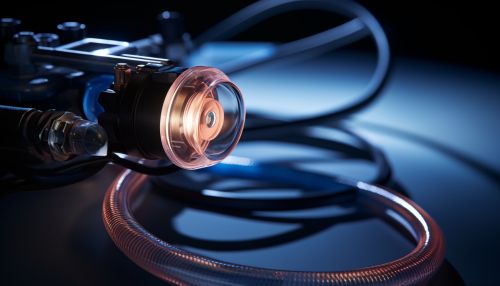Endoscopy
Overview
Endoscopy is a non-surgical procedure that allows medical professionals to view the interior of a patient's body using an instrument called an endoscope. The endoscope is a flexible tube equipped with a light and camera at its tip, which transmits images to a monitor for detailed examination. Endoscopy is a vital tool in modern medicine, enabling the diagnosis and treatment of a variety of conditions related to the digestive system, respiratory tract, and other internal organs.
History
The concept of endoscopy has been around for centuries, with early attempts at internal examination dating back to ancient times. However, the modern endoscope was not developed until the 19th century. The first successful endoscope was created by Antonin Jean Desormeaux in 1853, who used it to examine the urinary tract. The development of flexible endoscopes in the 20th century revolutionized the field, allowing for more comprehensive and less invasive examinations.
Types of Endoscopy
There are several types of endoscopic procedures, each designed to examine a specific part of the body. These include:
- Gastroscopy: Examination of the upper part of the gastrointestinal tract, including the esophagus, stomach, and duodenum.
- Colonoscopy: Examination of the large intestine and rectum.
- Bronchoscopy: Examination of the airways and lungs.
- Cystoscopy: Examination of the bladder.
- Laparoscopy: Examination of the abdominal or pelvic cavity.
- Arthroscopy: Examination of the joints.
Each of these procedures serves a unique purpose and requires specific preparation and aftercare.
Procedure
The endoscopy procedure varies depending on the type of endoscopy being performed. However, most endoscopies follow a similar process. The patient is usually sedated or anesthetized for comfort. The endoscope is then inserted into the body through a natural opening, such as the mouth or anus, or through a small incision in the case of laparoscopy. The endoscope is carefully maneuvered to the area of interest, and images are transmitted to a monitor for examination. Biopsies or treatments can also be performed during the procedure.


Risks and Complications
While endoscopy is generally a safe procedure, it is not without risks. Potential complications can include bleeding, infection, perforation of the organ being examined, and reactions to anesthesia. However, these risks are relatively low, and the benefits of endoscopy often outweigh the potential risks.
Future Developments
The field of endoscopy continues to evolve, with ongoing research and development aimed at improving the technology and expanding its applications. Future developments may include advances in imaging technology, the development of more flexible and maneuverable endoscopes, and the integration of artificial intelligence to aid in diagnosis and treatment.
